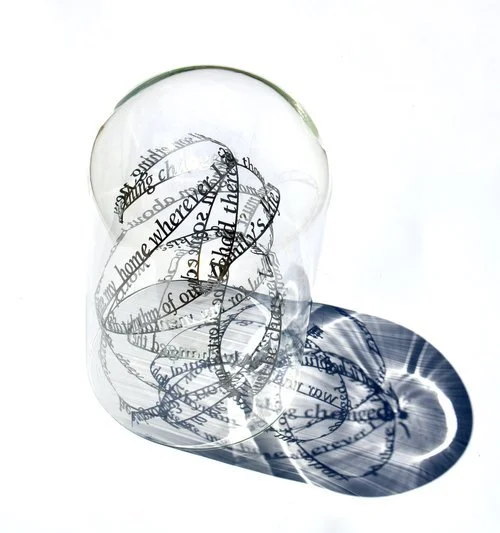An artist’s journal about migration
My work tells the stories of people who live life on the border - be that the edge of a geography, an identity, or even time. For the new series of works I launched in 2019, I invited personal stories from migrants and newcomers who have crossed physical and mental borders.
Each text sculpture tells the story of an individual who feels they live life in between two places. Some have moved by choice and economic migration, and some have been forced to move due to war or other circumstances outside of their control. Although there is a big difference between these two types of migration, both can give insight into the intangible, unspoken forces of home, borders, place, duality and otherness. In particular it was important to find out the human side of their story - in contrast to impersonal reports about migration.
My research platform www.humanarchiveproject.com is a portal for the public to anonymously submit their stories. I also interviewed individuals, and took part in meetings of asylum seekers. (Some who are living in the controversial Irish Direct Provision scheme, and others have now naturalised and integrated into society.) Many refugees expressed a sense of imprisonment when their rights were lost in their home countries, and in many cases more so since arriving in Ireland.
In the past, emigration was perceived as inevitable for many generations of Irish, and between 1841 and 1925 4.7 million Irish emigrants went to the USA. We are all connected, 2019, brings together multiple stories to form links between diverse individuals who may not realise how much they have in common. I wanted to join two groups of people - those of various ethnicities who were displaced earlier in their lives or are second generation migrants, with those ethnically Irish participants who have migrated and settled in other parts of the world. They tell their stories or their ancestors stories of migration. Here these two groups express similar themes in terms of marginalisation, displacement, longing, loss of culture, loss of language, and a sense of camaraderie within new communities of ‘others’.
Time, memory and borders were strong themes in many of the testimonies I collected, so I suspended the words upon ticking clock mechanisms. Within the glass vessel artworks called An anthology of Displacement, 2019, each tries to synchronise with its neighbour, but is forever separated by the invisible glass border.
The vessels I use were inspired by the alchemistic and olfactory world of Arabic perfumes, called minyak attar (or 'essential oil' in Malay language), which are used in the Hajj pilgrimage to Mecca - another kind of migration. Migrants may describe their transitions as a pilgrimage away from misfortune and towards hope.
The sound artwork you can hear on the black telephone is composed of testimonies gathered during my research. In contrast, the sculpted stories are not always fully readable due to the twists and complexities (much like the stories of every human being). If you look closely enough, you may find your own story in the artworks too.













